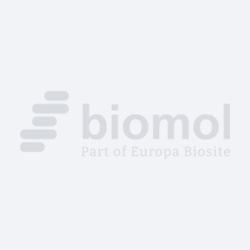Cookie preferences
This website uses cookies, which are necessary for the technical operation of the website and are always set. Other cookies, which increase the comfort when using this website, are used for direct advertising or to facilitate interaction with other websites and social networks, are only set with your consent.
Configuration
Technically required
These cookies are necessary for the basic functions of the shop.
"Allow all cookies" cookie
"Decline all cookies" cookie
CSRF token
Cookie preferences
Currency change
Customer-specific caching
FACT-Finder tracking
Individual prices
Selected shop
Session
Comfort functions
These cookies are used to make the shopping experience even more appealing, for example for the recognition of the visitor.
Note
Show the facebook fanpage in the right blod sidebar
Statistics & Tracking
Affiliate program
Conversion and usertracking via Google Tag Manager
Track device being used

| Item number | Size | Datasheet | Manual | SDS | Delivery time | Quantity | Price |
|---|---|---|---|---|---|---|---|
| C0108-25B.100 | 100 µg | - | - |
3 - 19 business days* |
668.00€
|
If you have any questions, please use our Contact Form.
You can also order by e-mail: info@biomol.com
Larger quantity required? Request bulk
You can also order by e-mail: info@biomol.com
Larger quantity required? Request bulk
Cadherins constitute a family of transmembrane glycoproteins involved in Ca2+-dependent cell-cell... more
Product information "Anti-Cadherin E (Cadherin-1, E-Cadherin, L-CAM, Epithelial Cell Adhesion Molecule, Uvomorulin, CDH1)"
Cadherins constitute a family of transmembrane glycoproteins involved in Ca2+-dependent cell-cell interactions. The members of this family are differentially expressed in various tissues. They function in the maintenance of tissue integrity and morphogenesis. Cadherins are divided into type I and type II subgroups. Type I cadherins include epithelial cadherin (E-cadherin, cadherin-1 or uvomorulin), neural cadherin (N-cadherin or cadherin-2), placental cadherin (P-cadherin or cadherin-3) and retinal cadherin (R-cadherin or cadherin-4). Kidney cadherin (K-cadherin or cadherin-6) and osteoblast cadherin (OB-cadherin or cadherin-11) are type II cadherins. One of teh best characterized cadherins is E-cadherin. It is a 120kD transmembrane glycoprotein consisting of an 80kD extracellular and a 40kD transmembrane and cytoplasmic part. The extracellular domains of E-cadherins are responsible for calcium binding which allows for homophilic interactions with other E-cadherin molecules on the same cell and neighboring cells. E-cadherin can interact heterophilically with integrin aeb7. The cytoplasmic domain of E-cadherin is linked to the actin cytoskeleton through the associated cytoplasmic catenin proteins. Establishing a complex localized to adherens junctions. In carcinomas, E-cadherin is frequently downregulated. This is consistent with its function of an invasion suppressor in normal epithelia. Applications: Suitable for use in Flow Cytometry, Immunohistochemistry, Immunocytochemistry, and Western Blot, Inhibition effect on cell-cell adhesion. Other applications not tested. Recommended Dilution: Immunohistochemistry (Frozen): 1:50-1:100. Use ABC as detection method. Note: Use PBS, 0.1mM CaCl2 and 0.1mM MgCl2, Immunocytochemistry: Methanol fixation, Flow Cytometry: 1:50-1:100, Western Blot: 1:50-1:500, Optimum dilutions to be determined by researcher. Hybridoma: NSO mouse myeloma cells with spleen cells from Balb/c mice. Storage and Stability: May be stored at 4°C for short-term only. For long-term storage, store at -20°C. Aliquots are stable for at least 12 months at -20°C. For maximum recovery of product, centrifuge the original vial after thawing and prior to removing the cap. Further dilutions can be made in assay buffer.
| Supplier: | United States Biological |
| Supplier-Nr: | C0108-25B |
Properties
| Application: | ICC, IHC, WB |
| Antibody Type: | Monoclonal |
| Clone: | 4A12 |
| Conjugate: | No |
| Host: | Mouse |
| Species reactivity: | human |
| Format: | Purified |
Database Information
| KEGG ID : | K05689 | Matching products |
| UniProt ID : | P12830 | Matching products |
| Gene ID : | GeneID 999 | Matching products |
Handling & Safety
| Storage: | -20°C |
| Shipping: | +4°C (International: -20°C) |
Caution
Our products are for laboratory research use only: Not for administration to humans!
Our products are for laboratory research use only: Not for administration to humans!
Information about the product reference will follow.
more
You will get a certificate here
Viewed

